
Fulminating
SJH Projects was in attendance at the Institute of Explosives Engineers conference ‘Fulmination 2025’ in Nottingham – nice and local. This is a great, high
The Green Revolution is Here. Electric motorised transport is mainly based around the use of lithium-ion batteries. These provide the required energy density at a cost and weight that earlier generations of batteries couldn’t. They are also finding their way into many portable tech applications and being rechargeable is driving down the cost of ownership and the need to replace them all the time.
So far, so good. Progress does however often come with unintended consequences. As these batteries and their chargers become widespread, the issue of them catching fire, usually during the charging process, is coming to the fore. A quick online search of news sites shows that the issue is becoming more and more of a concern to those that have to deal with consequences, but it has not really made its way through into the public consciousness yet – perhaps this practical downside of going green does not fit the agenda.

In 2022 SJH Projects was approached by the KMA Group in the Netherlands to see if our technology could be used to bolster their product range of protective fabrics. There was reason to assume that it could. Part of the testing process for our Detsafe range is to protect detonators from an external fire, such as might happen as part of a vehicle accident. This requires that the Detsafes are exposed to at least 600oC for 30 minutes. Our XPT material used in the Detsafes is an excellent insulator and with some modification could well form the basis of a protective system for E-Bike batteries during the thermal runaway that takes place when things go wrong.
As a result of this collaboration with KMA we developed the first in the range of Charge Boxes. This is sized for the most popular E-Bike battery and has been thoroughly tested to make it the safe way to charge batteries and prevent the fires that are taking lives and destroying properties. Further models to cover the full range of battery styles are coming online imminently.
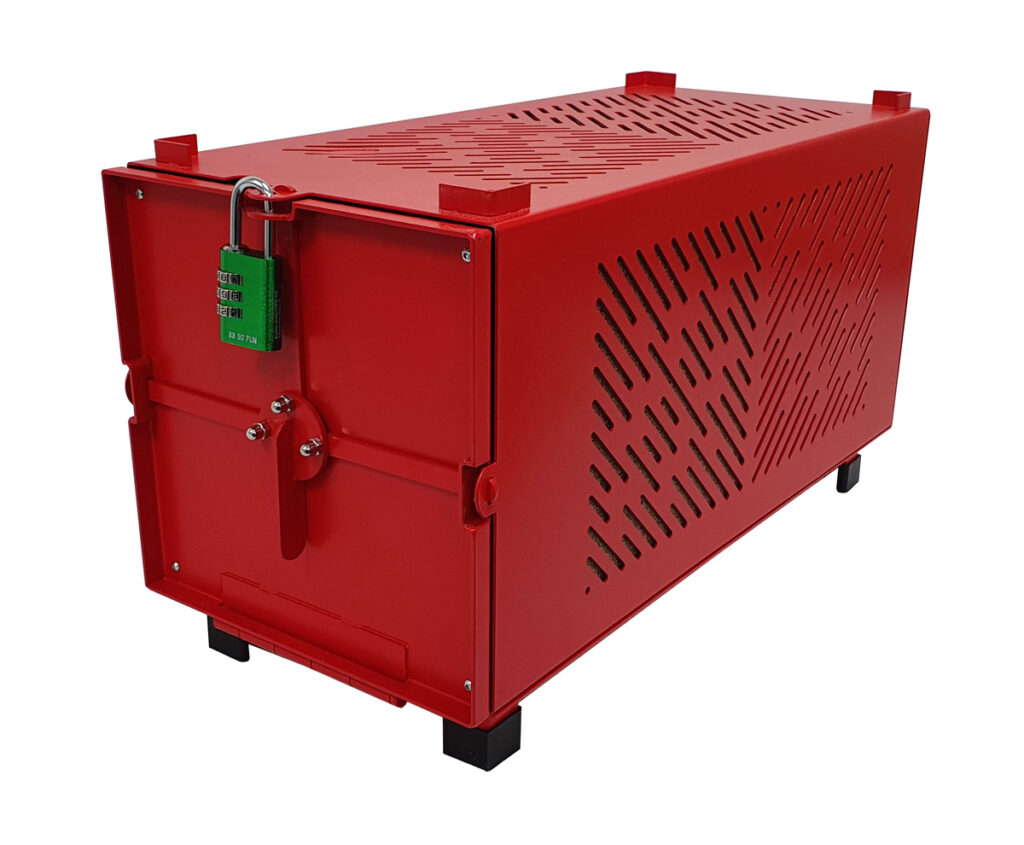
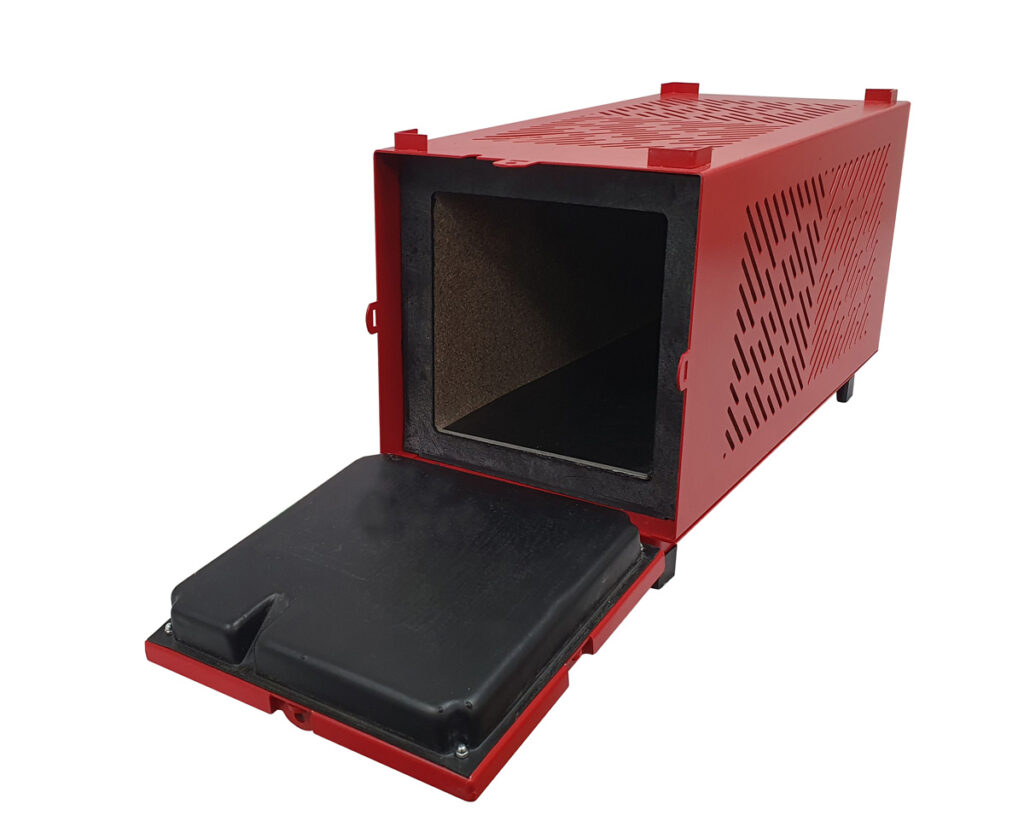
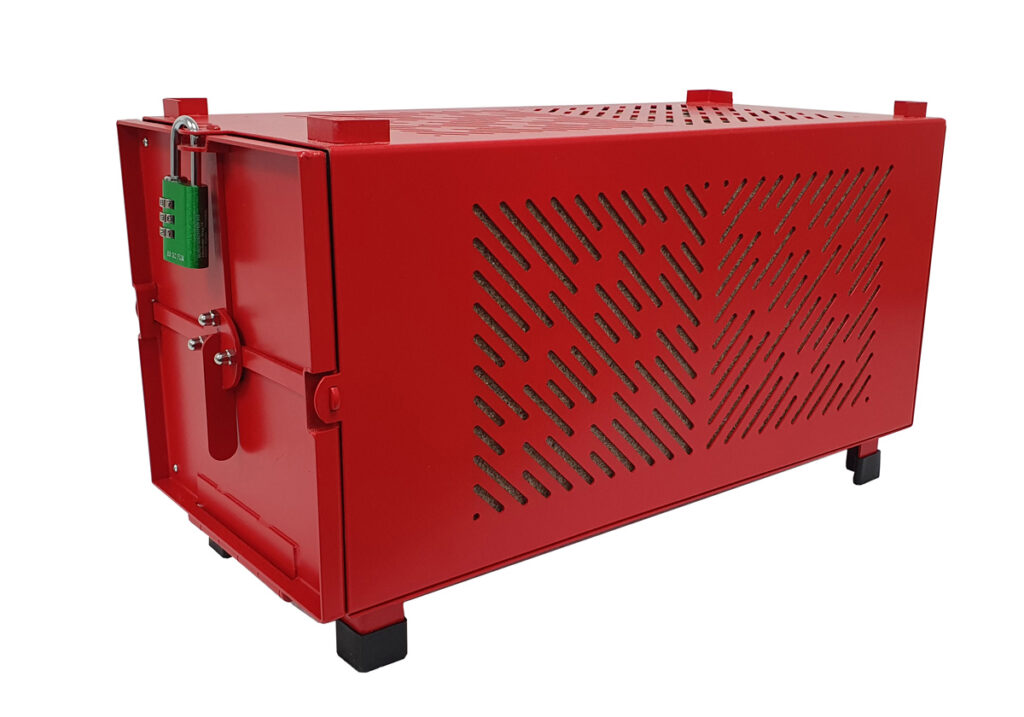
Who Needs a Charge Box?
The Individual: Many of the news stories about Lithium-ion battery fires relate to the private individual in their home. If you are bringing an item into your house, with such high energy density and an increasingly questionable safety record, you should consider the potential consequences. Much of the charging of these batteries is carried out at night, without active supervision. Letting a fire get hold in such circumstances is to be avoided. The conundrum with the individual user is that a lot of the fires seem to be caused by E-bikes and especially E-Bike conversion kits at the budget end of the spectrum, which means that those at the highest risk have the least resource to pay for a dedicated protection system. For the individual that does commit to such a system it would have to be simple and obvious to use, robust and require little or no maintenance.
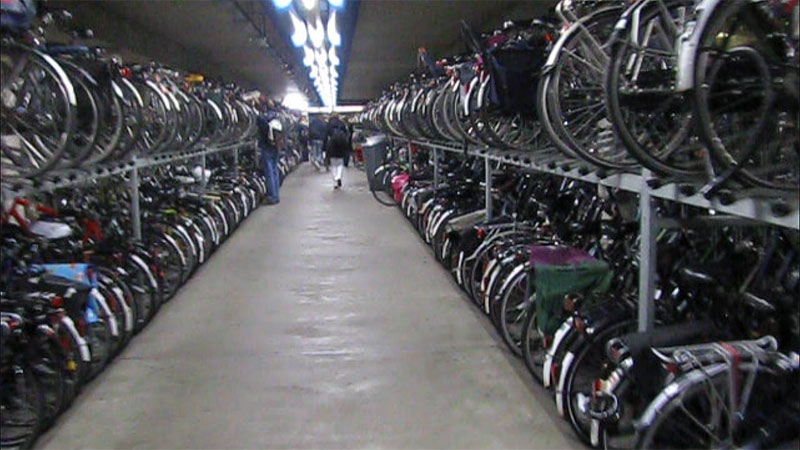
Businesses: In the push to net zero, many companies are encouraging their employees to not commute by car. The proliferation of ‘Low Emission Zones’ is actively discouraging commuters from using their internal combustion based vehicles. The E-bike, and to a lesser extent the E-scooter, is becoming a viable alternative.
As part of the core business of SJH Projects, blast assessments are undertaken for existing and proposed facilities. For these it is now not unusual to feature a large bike racking area within the building itself. This can be for hundreds of bikes, often just one floor down from the main reception. How many of these will now be E-Bikes? How many of the owners intend to charge them at work? What happens when one catches fire in amongst so many others?
Older facilities are usually less well configured for such centralised storage, maybe just some racks outside with public access. The E-Bike user will quite probably wish to remove the very expensive battery from their bike and bring it into the building – and might just intend to charge it up under their desk or somewhere else suitably convenient.
Charge Boxes provides a means to deal with this issue. They can be kept in a planned location. The Charge Box comes with the option to padlock it, so the user’s battery is secure. They have a cable port for access so that it is possible to charge the battery inside the Charge Box.
Hotels: Catering for, or even providing E-Bikes for hire, is a selling point for hotels. Is it best practice to have E-Bike batteries dispersed in guest’s rooms, charging up while they are out for dinner or asleep. It would be better that a designated location with a bank of charge boxes was made available, perhaps on a hire basis, so that the risk is managed and business continuity is maintained in the event of an issue.
If you are one of the above and can see how a Charge Box can help you then talk to us here.
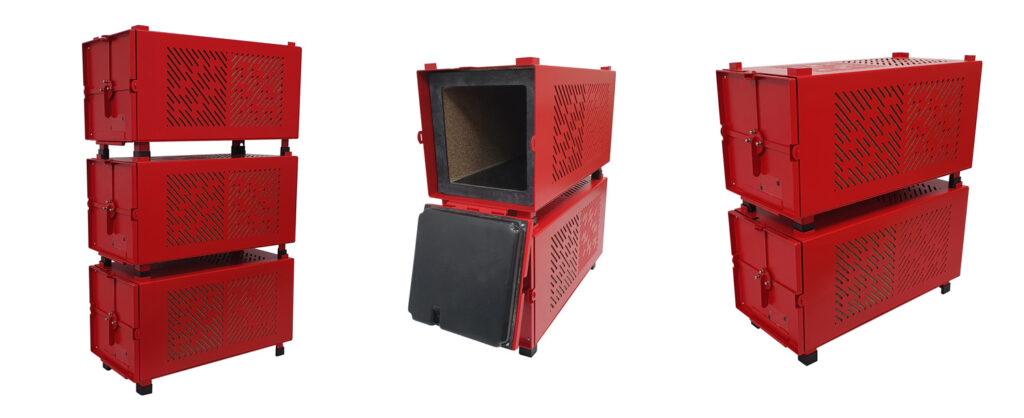
How did we do it?
It was recognised at the outset that to test a containment system, it would be necessary to initiate thermal runaway on command, with the battery inside the box and without compromising the protection it offers.
Despite the range of battery styles for E-Bikes, scooters and even full sized cars, the majority of them use the same basic cell, stacked, packaged and ordered, according to the task at hand. This common denominator is the 18650 cell.
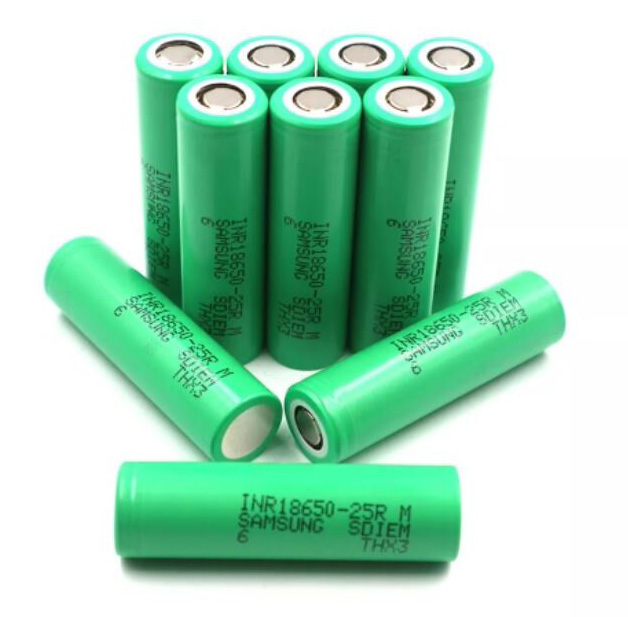

Scale Testing
Full sized batteries were not required or logical for just testing a means of initiation. It was concluded that eight, stacked in pairs, would be sufficient to see if initiation worked and then to see if propagation then took place to the unexposed batteries.
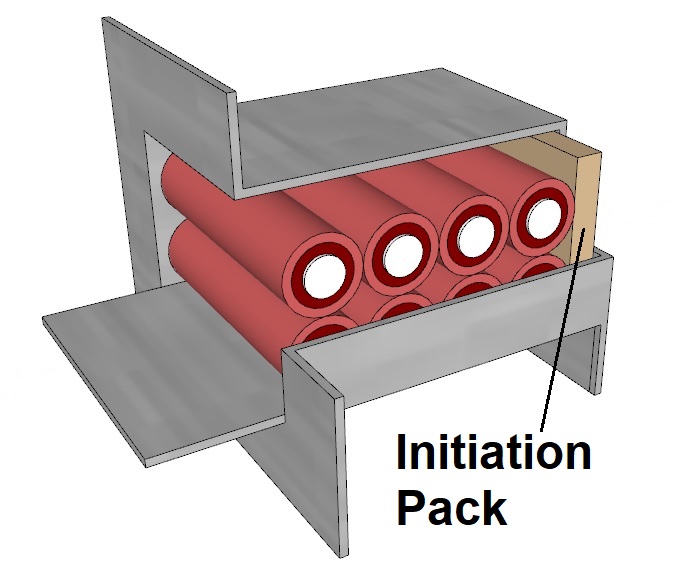
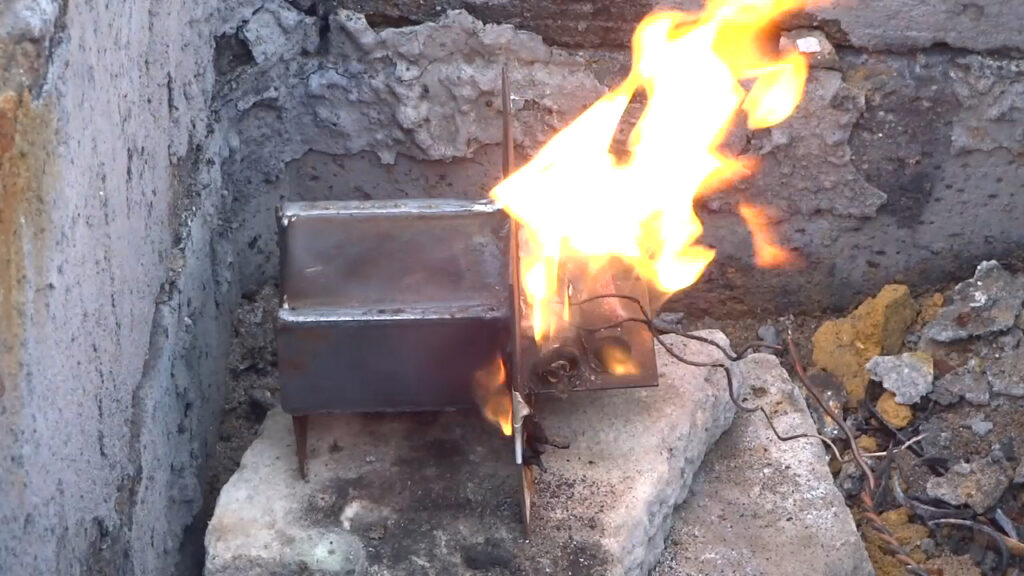
Full Scale Testing – Understanding the Problem
A fully charged up, large capacity battery was prepared and the initiation system was fitted to end that normally houses the charging port and lock. It was set off and filmed with video cameras and a separate thermal camera. The outcome was an education in just how energetic 18650 battery cells could be when they fired and it also reminded us of the of the old British ‘ Fireworks Code’, although here it was adapted to ‘Never return to a lit battery’. The thermal camera measured temperature spikes of 750C.
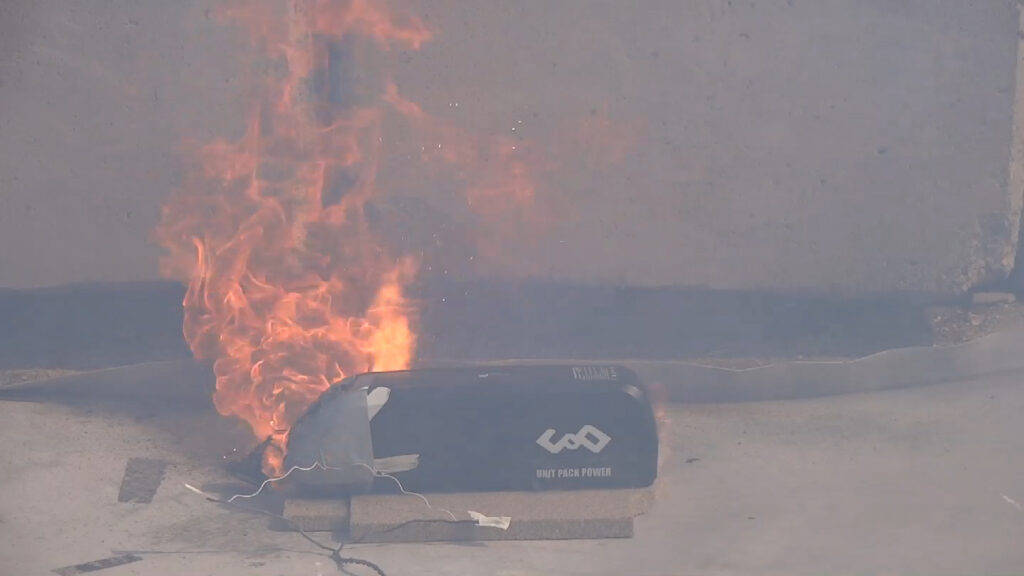
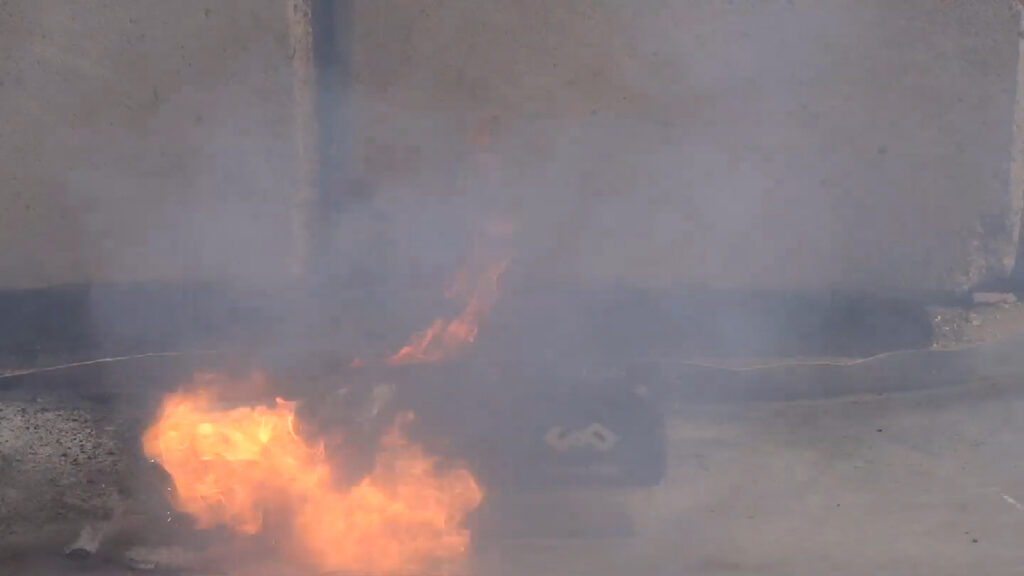
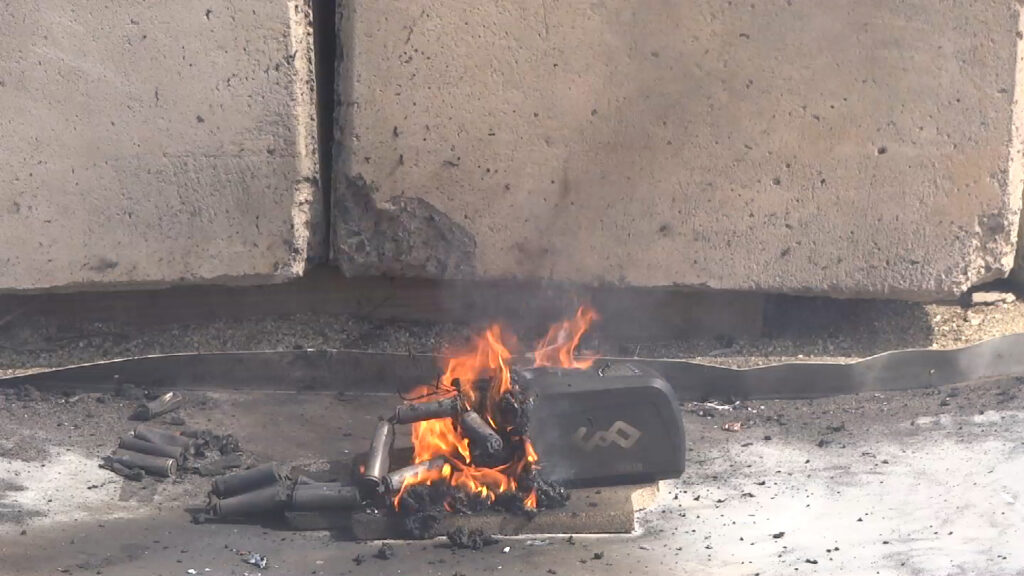
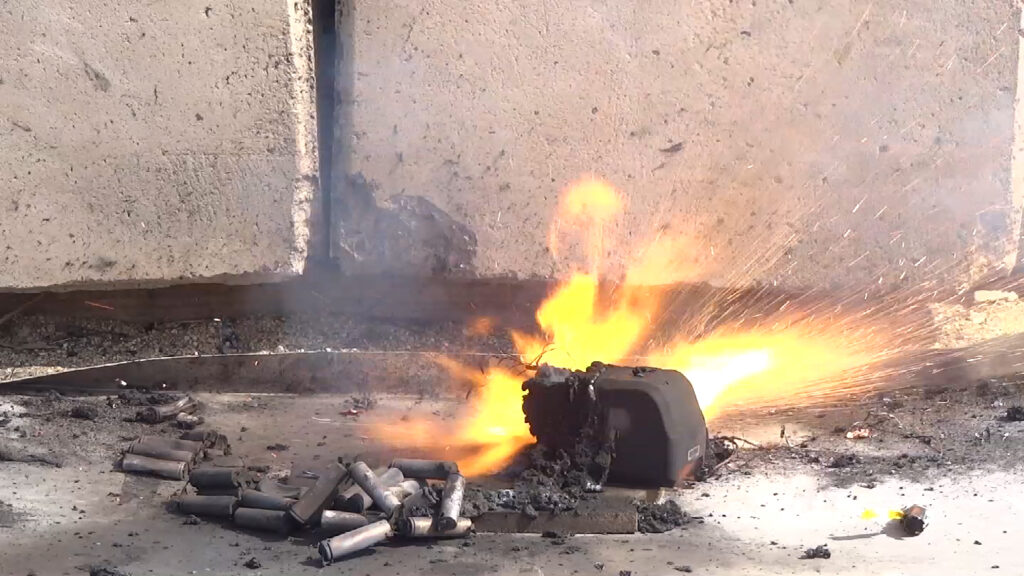
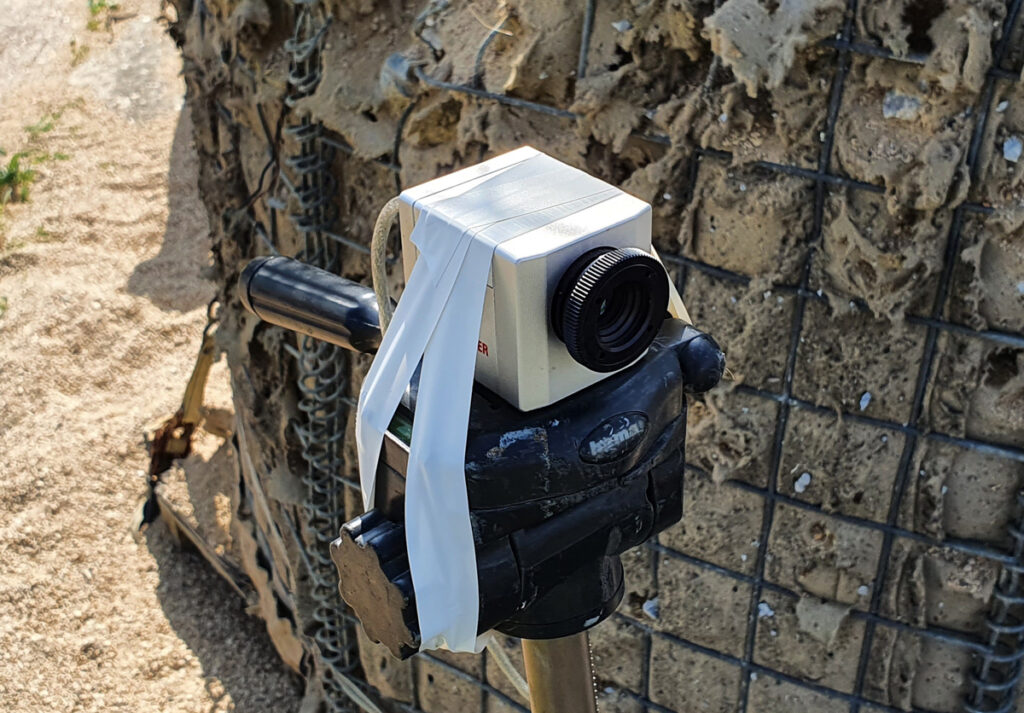

Testing the Solution
Proof of Concept Testing
The next step was to encase a battery of the type used in the full scale propagation tests and see how the modified XPT blast mitigation material performed. Containing the flames, heat and energetic fragmentation in a small volume is always likely to accentuate the effects and even accelerate the burn. It had also been decided that we would let the smoke vent to avoid creating a pressure vessel which could just create an even bigger problem, as well driving up costs and complexity.
Three units with a steel frame construction, perforated steel faces and a bolted door were tested. The only significant change in variables was the XPT material thickness. What was the least amount of material that balanced the protection from flame and heat while allowing smoke to vent in a controlled way?
A small slot around the door was used to introduce the command wire for the initiation system – this same slot would be used for the charging cable in real world use.
We used thermocouple probes inside and outside the of the test boxes and a thermal camera attachment that could overlay the thermal image with the camera image.
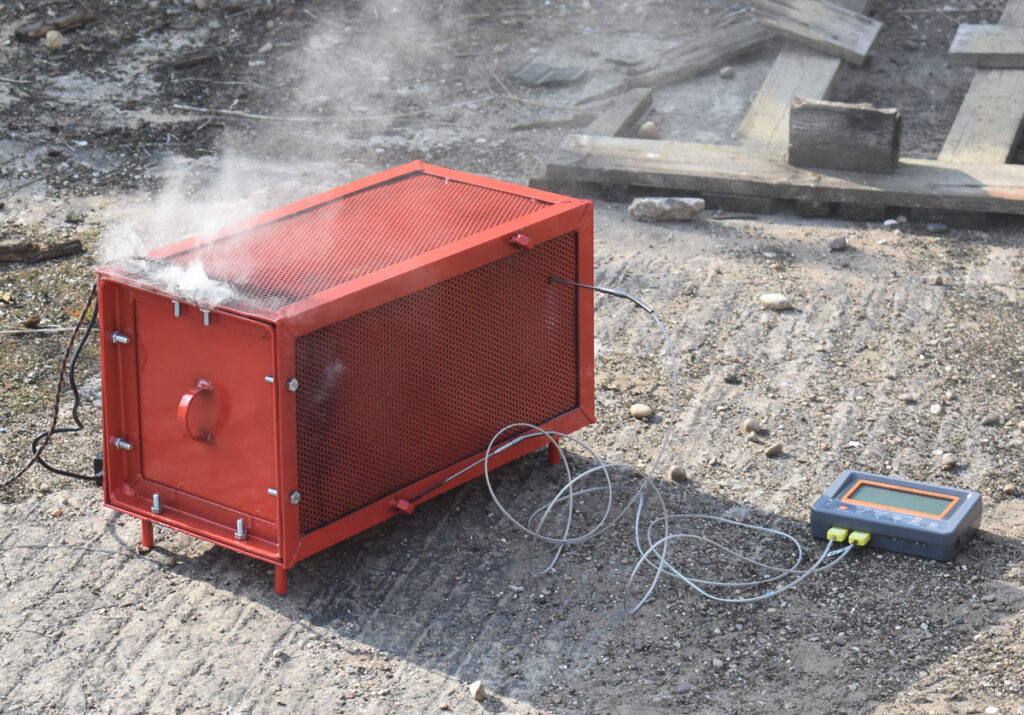
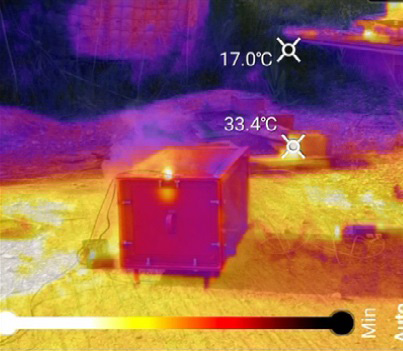
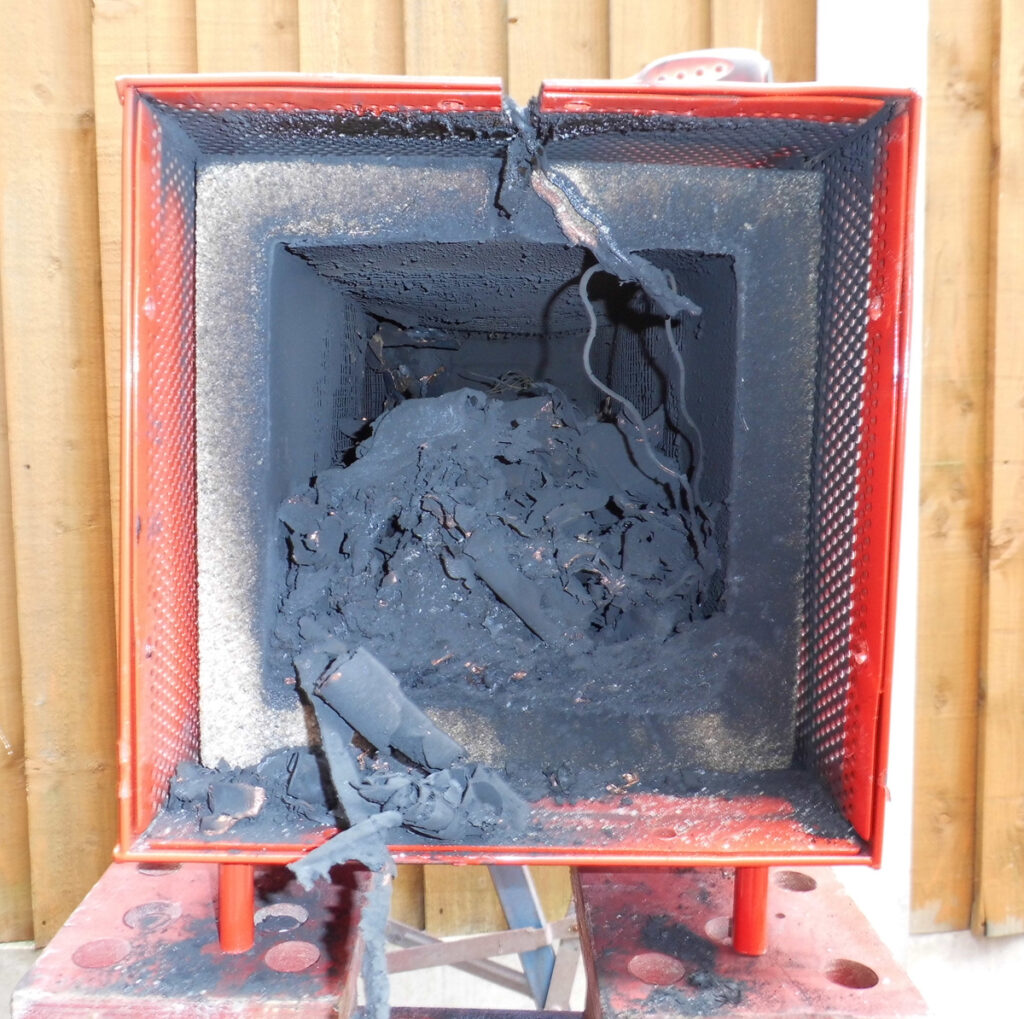
Production Standard Testing
Our thinnest material option worked as hoped, boding well for a practical and cost effective solution. A bolt-on door however, is not a practical option. A simple but viable catch mechanism was required that would resist the repeated internal blasts. Tests with this build standard were then performed.
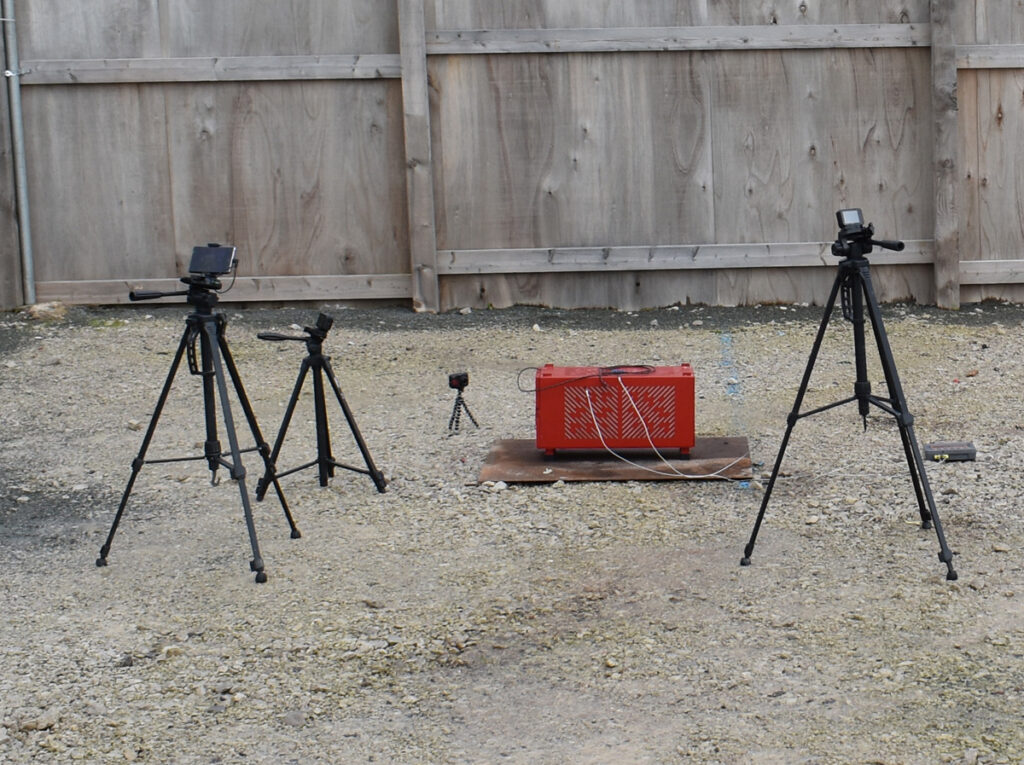
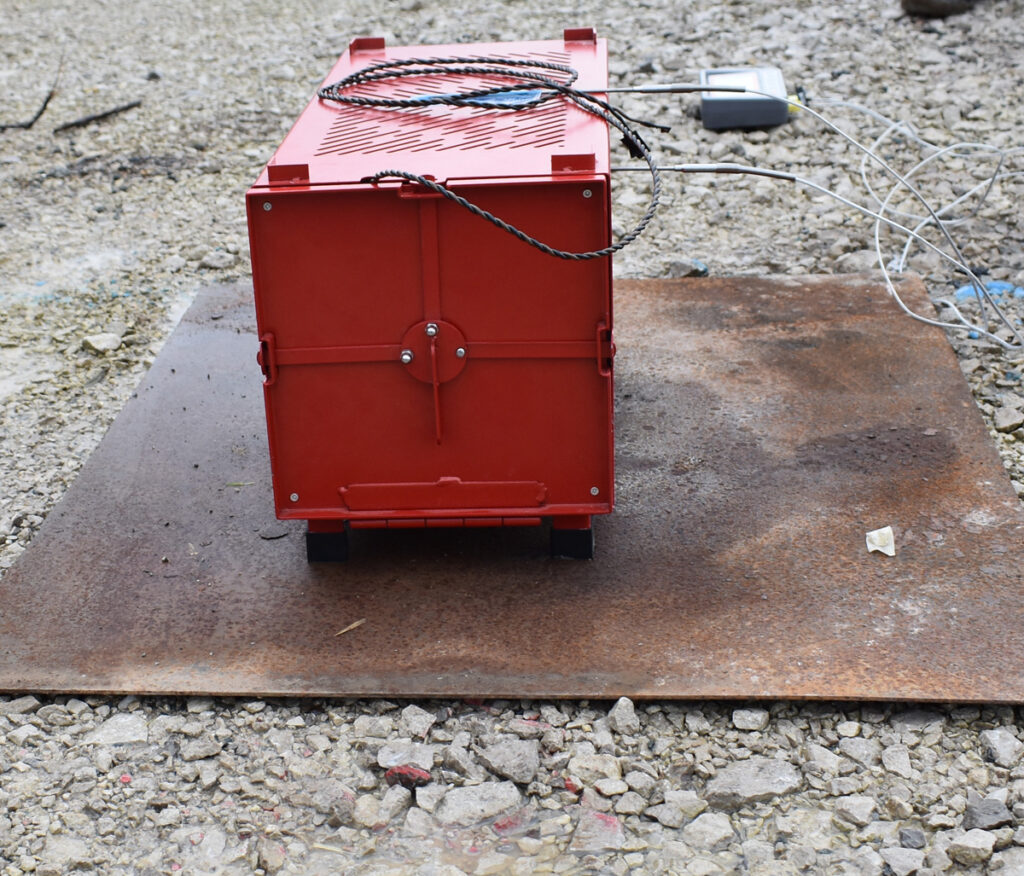
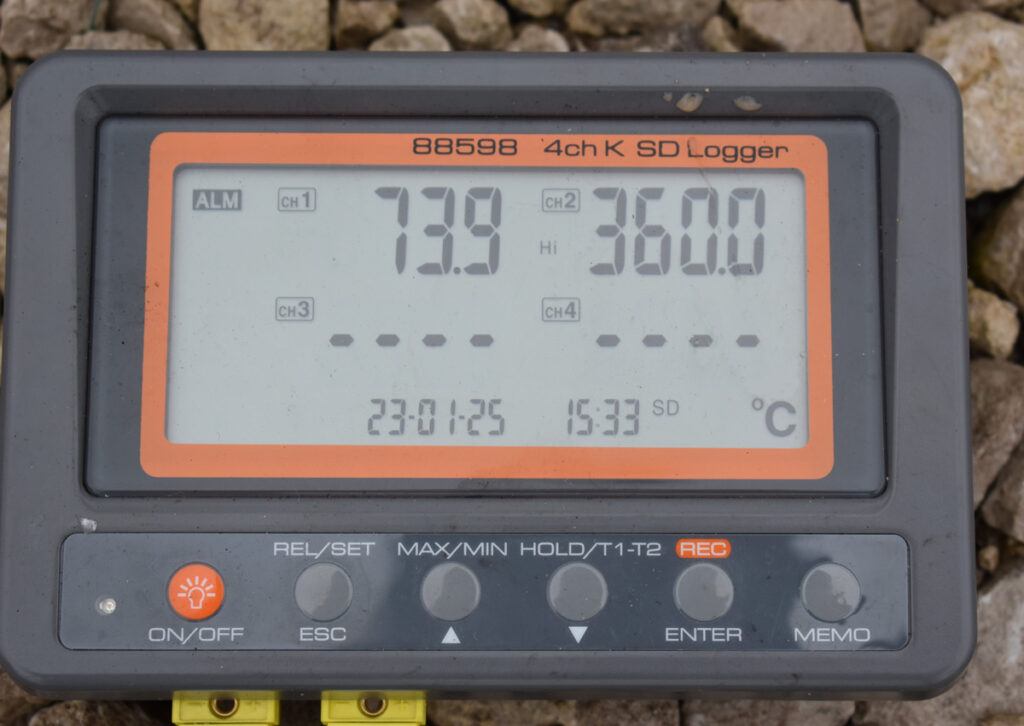
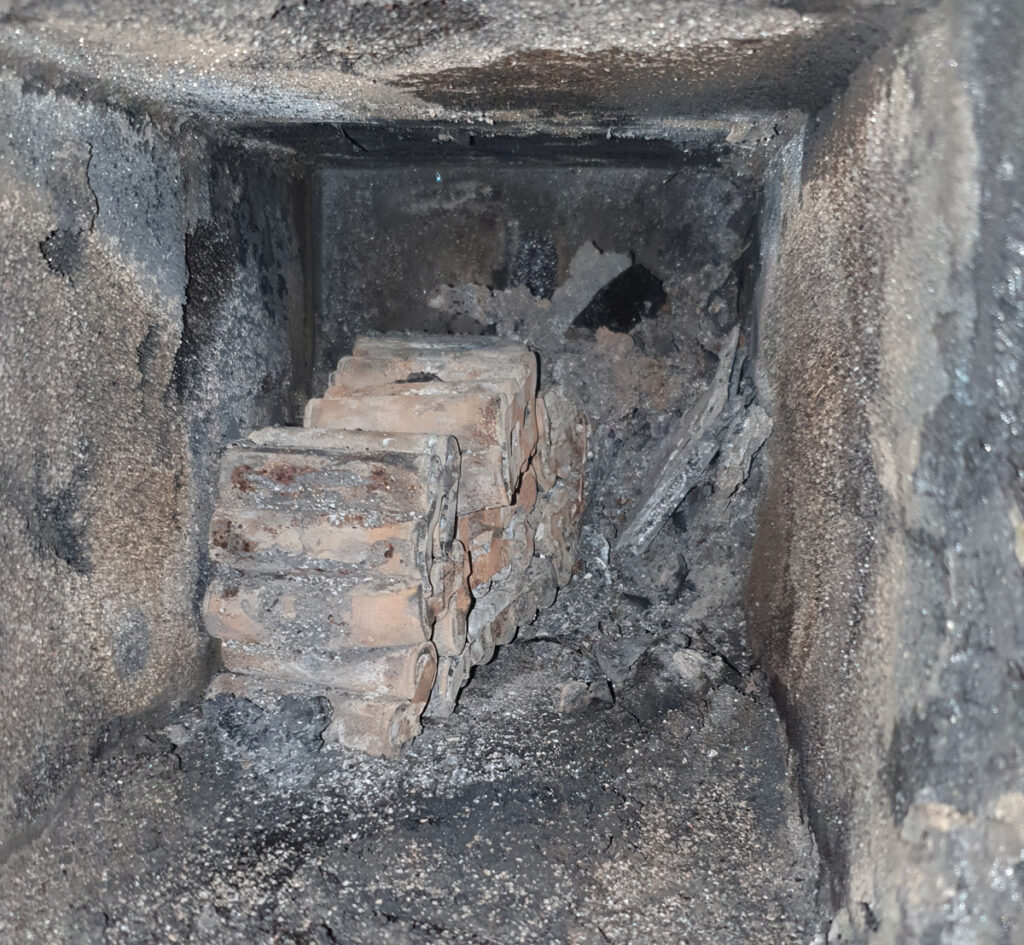
Coming Soon
Additional Sizes: We will shortly be adding to the range, with Charge Boxes designed to contain the longer but narrower batteries that are being integrated into bike frames and a wider Charge Box for the type mounted on the rear baggage rack.

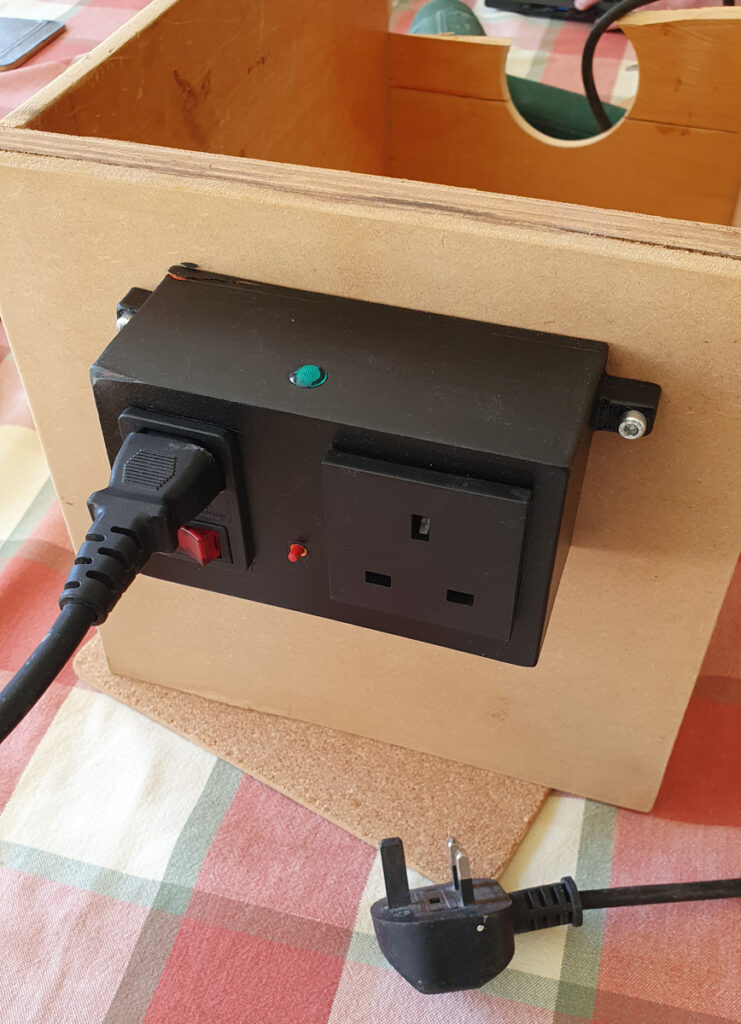
Power Management Module: We will also be introducing the Power Management Module. Mounted to the rear face of the Charge Box it has a thermocouple protruding into the air cavity. The PMM plugs into a mains supply and the battery charger plugs into the PMM. A temperature rise, above a pre-determined value, can indicate that the battery is getting warm and thermal runaway could be on the way. When this is detected, the PMM cuts the power to the charger. Once triggered, the PMM can be simply reset for future use with other batteries.
If PMM doesn’t head off the problem, the ability of the Charge Box to contain thermal runaway has been demonstrated.
A Flexible Technology
Away from specific battery containment products such as the Charge Box, the technology can be applied to areas such as barriers and/or other handling solutions for industry. Its all new, so talk to us to solve these problems together. Contact us here or call today.

SJH Projects was in attendance at the Institute of Explosives Engineers conference ‘Fulmination 2025’ in Nottingham – nice and local. This is a great, high
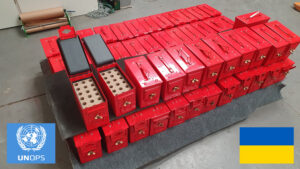
We are pleased to be supplying a batch of 60 Detsafe 18M units to a UNOPS programme in Ukraine. Clearing landmines and the Explosive Remnants

Busy day delivering and installing the custom built stand into the Export Support Team’s dedicated EOD showcase in Larkhill. This facility shows off the breadth